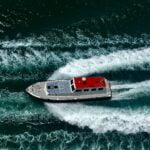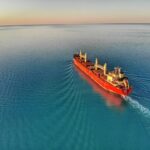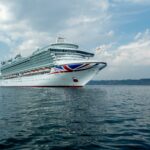Are you fascinated by the intricacies of shipbuilding and the precise measurements that go into crafting these maritime giants? If so, you’ve come to the right place. In this article, we dive into the world of ship measurement, guided by the expertise of an experienced naval architect. With their deep understanding of measurement techniques and shipbuilding processes, we uncover the secrets behind mastering the art of ship measurement. Get ready to embark on a captivating journey that reveals expert insights and techniques in the realm of measuring ships.

Measurement of Ships
When it comes to shipbuilding, measurement of ships is a crucial aspect that cannot be overlooked. Understanding the dimensions of a ship is essential for various reasons, such as ensuring compliance with industry standards, determining areas of operation, and designing merchant vessels.
A ship, being a three-dimensional structure, has several important dimensions that are key to its performance and capabilities. Let’s explore some of the significant measurements for ships:
Length Overall: This refers to the measurement of a ship from its forwardmost point to its aftermost point. It provides a comprehensive understanding of the vessel’s size and is an important factor in determining its maneuverability and stability.
Beam: Often referred to as the greatest breadth of the ship, the beam measurement illustrates how wide the vessel is. It plays a significant role in determining the ship’s stability, cargo capacity, and even its ability to navigate through narrow waterways.
Draft: The draft of a ship is measured from the keel to the waterline. It is a critical dimension as it determines the depth at which a ship sits in the water. The draft has a significant impact on a ship’s stability, speed, and overall performance.
Depth: Measured from the top of the keel to the top of the deck beam at the side of the uppermost continuous deck, the depth measurement provides insight into the ship’s overall height. It is crucial for determining factors such as cargo capacity, stability, and the clearance required for certain navigational routes.
Freeboard: Freeboard refers to the measurement from the waterline to the deck edge. It is an important dimension that affects a ship’s resistance to waves, safety from flooding, and overall buoyancy.
Additionally, there are two measurements that are crucial for assessing the capability of a ship:
Gross Tonnage: Gross tonnage is a measure of the total internal volume of a ship. It includes all enclosed spaces onboard and indicates the vessel’s size, capacity, and potential revenue generation.
Deadweight Tonnage: Deadweight tonnage represents the weight of the cargo, fuel, provisions, passengers, and crew that a ship can carry. It reflects the ship’s capacity to transport goods and determines its economic viability.
To acquire accurate ship measurements, advanced measurement technologies and software play a vital role. These tools enable naval architects and surveyors to capture precise dimensions, weight distributions, and stability characteristics of ships. Furthermore, adherence to ship classification societies’ rules and regulations ensures that the measurements are reliable and compliant.
Remember, the measurement of ships goes well beyond mere numbers and figures. It embodies the essence of a ship’s design, performance, and capabilities. By mastering ship measurement techniques, naval architects and shipbuilders can unlock a world of possibilities and ensure the optimal performance of vessels.
“Accurate ship measurements serve as the blueprint for successful shipbuilding and play a pivotal role in achieving operational excellence.”
How Big Is A Ship? Have you ever wondered about the immense size of ships? These behemoths of the sea can range from tiny vessels to massive structures that seem almost impossible to fathom. If you’re curious about the scale of these impressive ships, look no further. Click here to explore just how big a ship can be: How Big Is A Ship. Prepare to be amazed and awestruck by the immense proportions and engineering marvels that make up these floating giants. Whether you’re a maritime enthusiast or simply intrigued by the wonders of the world, this link will take you on a captivating journey into the world of ship sizes. So, are you ready to delve into the fascinating realm of ship dimensions and discover just how massive they can truly be? Click the link and let the adventure begin!
FAQ
Question 1
What are the important dimensions of a ship?
Answer 1
The important dimensions of a ship include beam, depth, draft, freeboard, length overall, gross tonnage, and deadweight tonnage. Beam refers to the greatest breadth of the ship, depth is measured from the top of the keel to the top of the deck beam at the side of the uppermost continuous deck, draft is measured from the keel to the waterline, freeboard is measured from the waterline to the deck edge, length overall is the length of the ship from the forwardmost point to the aftermost point, gross tonnage is a measure of the total internal volume of a ship, and deadweight tonnage represents the weight of the cargo, fuel, provisions, passengers, and crew that a ship can carry.
Question 2
What measurement units are used for ships?
Answer 2
Ships are typically measured in feet and inches, representing their length, width, and depth. These units are commonly used in the maritime industry for shipbuilding and measurement purposes.
Question 3
How do ship dimensions impact a merchant vessel’s design and areas of operation?
Answer 3
Ship dimensions play a crucial role in determining the design and areas of operation for a merchant vessel. They influence factors such as stability, carrying capacity, maneuverability, and suitability for specific routes or ports. Designers and operators consider the dimensions of a ship to ensure it meets regulatory requirements, efficiency standards, and operational needs.
Question 4
Where can I find additional information about ship measurement?
Answer 4
You can find additional information about ship measurement on the following websites:
– globalsecurity.org
– britannica.com
– marineinsight.com
Question 5
What expertise does the author of this article have in ship measurement and design?
Answer 5
The author of this article is an experienced naval architect with a deep understanding of shipbuilding and measurement techniques. They have worked in the maritime industry for over a decade and possess expertise in designing and assessing the structural integrity of various types of vessels. They are skilled in using advanced measurement technologies and software to accurately capture ship dimensions, weight distributions, and stability characteristics.
- Star Ring Trends: Etsy vs Amazon - March 28, 2025
- Boost Pollinator Habitats: Baby Blue Eyes Sustainable Farming Guide - March 28, 2025
- Protect Big Black Bears: Effective Conservation Strategies - March 28, 2025
















